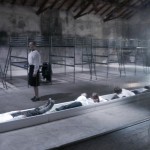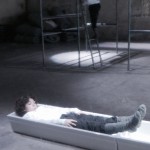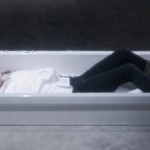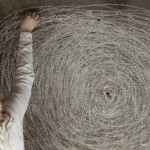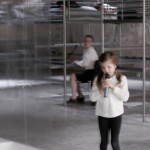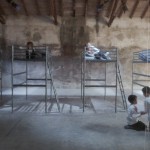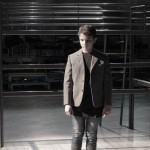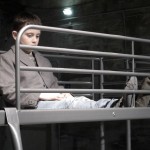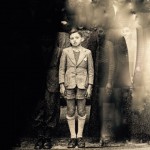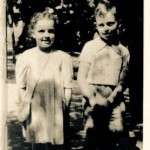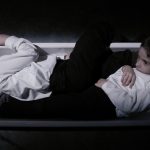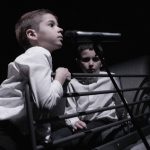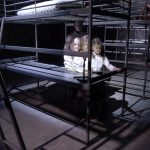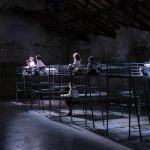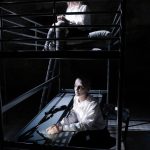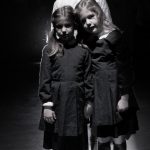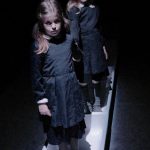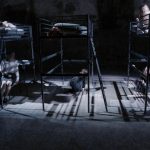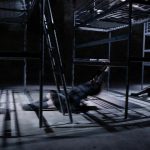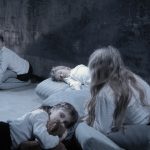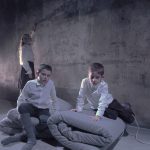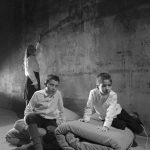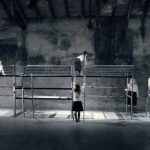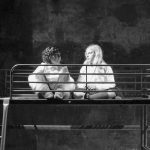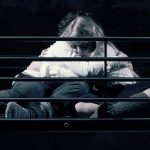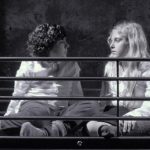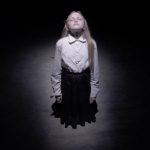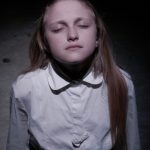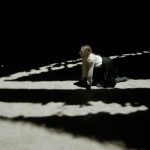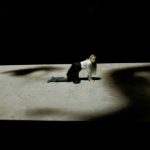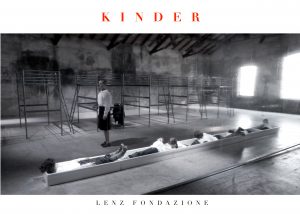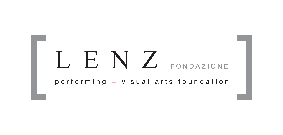
Kinder
We are talking about children, it is good to remember this because using the verb – capture – becomes almost unreal and it would be too easy to lump them in with the thousands of children who have died, been deported or are fleeing from recent or ongoing wars, so we want to focus on the faces of the children of Parma, as on a single monumental child’s face that can represent all the KINDER of every war.
- kinder ndt
Project for the Celebration of the 71st Anniversary of the Liberation Struggle
Dramaturgical research on the themes of the Resistance and the Holocaust has given rise to Kinder (Children), an original text by Francesco Pititto on the tragedy of the Jewish children of Parma who were victims of the Nazi extermination. The history of the anti-Jewish persecution carried out by Fascism between 1938 and 1945 is well known, but rarely do we reflect on what those tragic years meant for Italian children. Especially for Jewish children, who were expelled from school and witnessed helplessly their parents’ progressive social and occupational marginalisation, if not the destruction and physical elimination of their own families.
Seventy-four Jews, both Italian and foreign, were deported from Parma. Of the twenty-three victims of extermination, six were children and their story has become part of Parma’s collective memory. The story told began in 1938, when the Fascist government issued laws affecting the citizenship rights of Jews in Italy, and ended in April 1944, with the deportation to the Auschwitz extermination camp of most of Parma’s Jewish community. The events concern in particular a group of children, protagonists, in spite of themselves, of that tragic event: Donato and Cesare Della Pergola, Liliana, Luciano and Roberto Fano, Roberto Bachi. Before being transported to Fossoli, they were interned in the concentration camp of Monticelli Terme (Parma). None of them returned from Auschwitz.
Non-silent art
So many images are produced during memorial journeys, but what is documented? How far can one go beyond documentation? If the documentation, from an aesthetic point of view, remains almost identical (photographic and audiovisual media mostly) and confined within the confines of the historical narrative, even if it is elaborated by writing poems or impressions, with the passing of time the memory becomes “frozen” in a rigid formal structure, what remains of the work and extermination camps remains a building, a rail, a gate, barbed wire and each one resonates with destroyed humanity but the image of what it is, what it was remains; While measuring oneself against the production of new images, new forms of expression, up to the limits of what historical and ethical interpretation and artistic creation allow us, would lead the historical document – be it monumental, architectural, photographic or on paper – to renew itself in its function of dissemination and presence in the contemporary world, to bring about transformations that would diminish the temporal distance, the memory, the image-crystal of the past and the present would merge into a single figure, which is memory but also the life of today. When there will be no more survivors to remind the world of what has been, the new generations will have to tell it again to the next ones to keep the memory alive and the way of the new story, so that History will not go too far away, will have to find the most effective means to make it still arrive straight to the heart and mind of everyone, so that it becomes our history. Because unfortunately the images and reality of the present continually provide us with direct references to what has already happened.
The dramaturgy of KINDER contains different parts of this History: the list of the work and extermination camps, the letters of a mother to “Mr. Questore of the Province of Parma”, anonymous poems of Jewish children of the camps, imaginary dialogues between the children of Parma and two other children of the camps, Tereszka and Papo, a retranslated version of “Tenebrae” by Paul Celan but the dramaturgic core remains the song. And here is the presence/resurrection of the children of the Coro di Voci Bianche becoming performative essence together with a single actress, reflection and refraction of six truncated lives, through their silent gazes and then reciting voices and singing a single Lied by Mozart/Overbeck “Komm lieber Mai_” that speaks of an imminent May, of violets, of games in the night and in the snow, of a free beloved country.
Around and inside, the electronic landscape of a musical dramaturgy made of foreign voices, reworked noises made of sound references from the camp, musical movements aimed at creating new space-time dynamics.
KINDER goes in search of an Echo of what could no longer be said, no longer be listened to, no longer be written, no longer be forgotten, of an art that is not serene. Paradoxically, it attempts to “sound the silence” that the death of six Jewish children, together with that of millions of human beings, would impose on reason; but even Adorno, after his long-distance dialogue with Celan on the impossibility of poetry after Auschwitz, later wrote: “The incessant pain has as much right to express itself as the martyred person has to scream. So perhaps it is false to have said that after Auschwitz one can no longer write poetry […] Art, which is no longer possible at all if not reflected, that is, taken only as a problem, must of itself renounce serenity. And it is forced to do so first of all by recent events. Saying that after Auschwitz one can no longer write poetry has no absolute validity, but it is certain that after Auschwitz, since it was and remains possible for an unforeseeable time, one can no longer imagine a serene art.
KINDER [Children]
Testo and imagoturgy | Francesco Pititto
Installation, plastic elements, direction | Maria Federica Maestri
Music | Andrea Azzali
Ars Canto Children’s Music Directorate | M° Gabriella Corsaro
Historical Consultancy | Marco Minardi
Performers | Valentina Barbarini con Pietro Anelli, Samuele Bellingeri, Matteo Castellazzi, Marcello Costa, Martina Gismondi, Agata Pelosi, Alessandro Poli, Cloe Teodori, Anna Giada Vaccaro
Lights | Alice Scartapacchio
Assistant | Marco Cavellini
Production | Lenz Foundation in collaboration with ISREC
The project will be inaugurated by a conversation at Lenz Teatro – on 25th April at 6 p.m. – moderated by Marco Minardi, director of ISREC – Istituto storico della Resistenza e dell’Età Contemporanea in Parma, with the participation of the Turinese historian Bruno Maida, author of several books on the Shoah and Jewish children, and the teacher Patrizia Bertolani from Liceo Marconi, in dialogue with the Artistic Directors of Lenz.
Many images are produced during memorial journeys, but what is documented? How far can one go beyond documentation? If the documentation, from an aesthetic point of view, remains almost identical (photographic and audiovisual media mostly) and confined within the boundaries of the historical narrative, even if it is elaborated by writing poems or impressions, with the passing of time the memory becomes “frozen” in a rigid formal structure, what remains of the labour and extermination camps remains a building, a rail, a gate, barbed wire and each one resonates with destroyed humanity but remains the image of what it is, of what it was; While measuring oneself against the production of new images, new forms of expression, up to the limits of what historical and ethical interpretation and artistic creation allow us, would lead the historical document – be it monumental, architectural, photographic or on paper – to renew itself in its function of dissemination and presence in the contemporary world, to bring about transformations that would diminish the temporal distance, the memory, the image-crystal of the past and the present would merge into a single figure, which is memory but also the life of today. When there will be no more survivors to remind the world of what has been, the new generations will have to tell it again to the next ones to keep the memory alive and the way of the new tale, so that History will not go too far away, will have to find the most effective means to make it still arrive straight to the heart and mind of everyone, so that it becomes our history. Because unfortunately the images and reality of the present continually provide us with direct references to what has already happened.
(…) Kinder is composed according to the principle of tragic irony, that narrative device whereby, since the epilogue of a story has already been revealed, everything that will happen, whether sad or happy, will be frozen by the certainty of the end. Tragic irony nails down any narrated present – in the theatre we would say “evoked” – because proposing it denies it. However, Maestri and Pititto do not “use” tragic irony, they systemise it. In other words, they deny any representation, concentrating their entire work on what cannot be shown; not so much for discretion but precisely because the Holocaust is a void: with it it was no longer a question of killing but of denying life. This is the real historical, apolitical, human lesson of the Holocaust, and Lenz gives it back to us with lucidity and abnegation, even to the risk of renouncing the theatrical success. No pathos, no myth, a heavy void and then silence: to remind us that a voice once existed. more (…)
Giulio Sonno, Paper Street
Donato and Cesare Della Pergola, Liliana, Luciano and Roberto Fano, Roberto Bachi, Salomon Papo, Rena Papo, Teresa, showed themselves with the face of our children, while we made ourselves unrecognisable as fathers. Kinder (Children) confronted us with the fear and disgust of having killed them and of continuing to do so, even if only by allowing it to happen: silence is the extermination camp that has not yet been liberated. From there the Kinder sing. more (…)
Matteo Brighenti, PAC – PaneAcquaCulture
The work of Pititto and Maestri, artists like little Tereska grappling with the enveloping design of her own home, is an incessant impulse, a work that is continually preparatory to what art must/can never present in a finished form: the poetic attempt to transfigure the unfinishedness of existence, a horizon that is impossible to possess and in which to cultivate the ethics of hospitality, so as to offer the last, but anyone, even and above all when sensitive, and therefore not expected, the hope of always finding their dignity accepted. more (…)
Daniele Rizzo, Persinsala
A particularly daring undertaking, then, this one by Lenz: and speaking of children with children on stage! (…) And the dialogues between the children seem to have a disconcerting naturalness of their own: what’s your name? Are you alone? See you tomorrow? (…) Kinder succeeds in deeply moving us precisely through a rigorous formal ensemble, a performance in which, however, it is children who act and sing, evoking others who have not been allowed to grow up.
Valeria Ottolenghi, Gazzetta di Parma
He who stays in his nest does not know the world at all
Luciano – Papo
Komm, lieber Mai > processing Andrea Azzali







